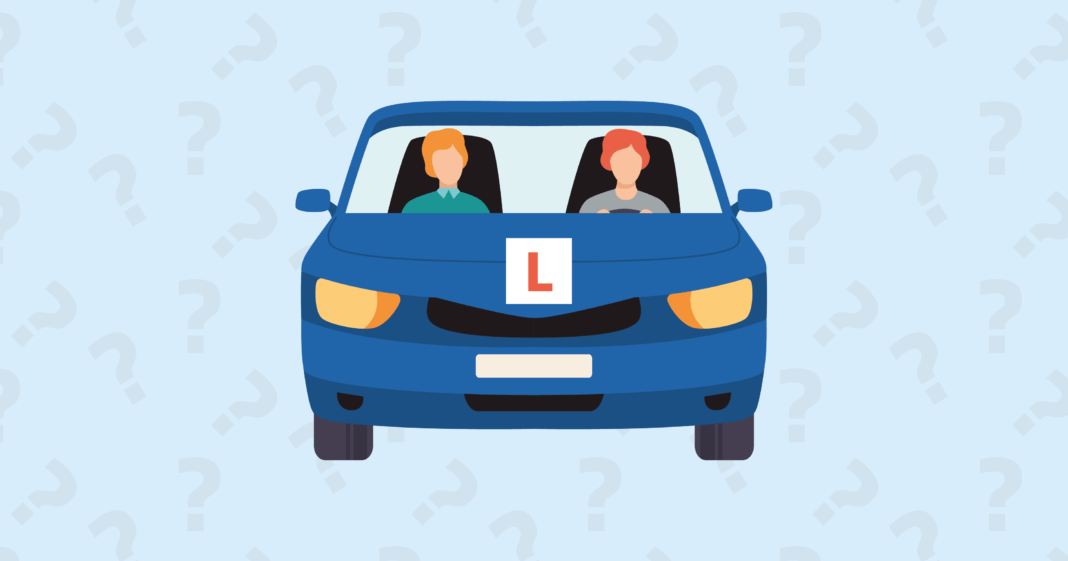Last Updated on April 25, 2024
Learning to drive with passengers comes with a raft of rules and regulations around who you can and cannot carry in the car with you. The safety of you, the learner driver, your passengers, other road users and pedestrians is paramount and as a learner you can pose a considerable risk.
In this article we try to answer some of the questions you may have around who you can and can’t carry as a passenger in your car as you learn to drive.
Who can supervise me as a learner driver?
Before we consider who can join you as a passenger in your car, we must stress that you must always be accompanied by either a driving instructor, or a passenger that:
- Is seated in the front passenger seat
- Is over 21 years of age
- Is qualified to drive the type of vehicle you are learning in e.g. they must have a manual car licence if they’re supervising you in a manual car
- Has held a full driving licence for 3 years (from the UK, EU, Switzerland, Norway, Iceland or Liechtenstein)
You could be fined up to £1,000 and get up to 6 penalty points on your provisional licence if you drive without the right supervision.
Additionally, the car that you are learning to drive in must be correctly insured and clearly display L-plates to let other road users know the driver is a learner.

How many passengers can a learner driver with?
Following on from above, a learner driver must always have at least one passenger sitting in the front passenger seat that will be your supervisor.
Whilst carrying additional drivers is legal, it is generally recommended that learner drivers limit the number of passengers they carry, in order to reduce distractions and focus on practising driving.
Permitting you don’t exceed the maximum number of people a vehicle can hold you will be learning within the law. For example, in a typical 5 seat vehicle, you will carry your supervising passenger in the front passenger seat and up to 3 people in the back seats.
Remember, all passengers must wear a seatbelt, and if carrying any children the correct car seat must be used.
What are the benefits of learning to drive with passengers?
As a learner driver, it’s important to gain experience driving in different situations, such as driving with passengers.
Passengers can add an extra level of distraction and pressure, which can be challenging for learner drivers. However, by practicing driving with passengers, learners can become more confident and experienced with potential distractions they’ll face when they pass their test.
What are the risks of learning to drive with passengers?
While it’s important for learners to gain experience driving with passengers, it’s also important to recognise the associated risks.
Passengers can be distracting, and inexperienced drivers may struggle to manage noisy or disruptive passengers, which could increase the risk of an accident.
It’s also important to remember that vehicles will be heavier and can handle differently when all passenger seats are occupied.
Get a Learner Insurance Quote with Collingwood
Can a learner driver carry children in the car?
Whilst you can learn to drive with children in the car, it’s not always the best idea as children don’t often make the best passengers. Children can often be very distracting, even to experienced drivers.
If you do wish to practice driving with your supervising driver and a child in the car you should familiarise yourself with the laws surrounding child car seats and booster seats.
Top tips for carrying passengers as a learner driver
Whilst carrying passengers could be a nerve a wracking experience, it can also be seen as important part of the learning to drive journey. Here are some top tips to help you manage the challenge of learning to driver whilst carrying passengers.
- Before you embark on practice outside of your driving lessons, you must get your own insurance as a learner driver.
- Consider if you really need more passengers than your supervising passenger. If there’s a chance additional passengers may cause a distraction, you can always decline to let them along for the ride.
- Plan your route before embarking on your journey and tell your passengers the route is planned. This will help them feel more relaxed and can help reduce the risk of distraction.
- Set some ground rules with your passengers. For example make sure your passengers are aware that they should always wear their seatbelt and refrain from being loud. Make it clear that you would like to focus on practising your driving.
- Make sure you stay focused when you’re learning to drive and carrying passengers. Passengers other than your supervising passenger could become a distraction.
- Communicate clearly with your passengers. Let them know when you may be changing lanes or about to brake as you approach a junction.









